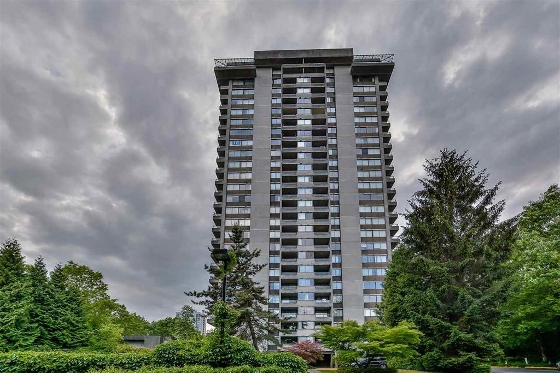Posted on
July 15, 2016
by
Hafez Panju
According to statistics released today by The Canadian Real Estate Association (CREA), national home sales declined further in June 2016.
Highlights:
- National home sales fell 0.9% from May to June.
- Actual (not seasonally adjusted) activity came in 5.2% above June 2015.
- The number of newly listed homes rose 2.2% from May to June.
- The MLS® Home Price Index (HPI) rose 13.6% year-over-year in June.
- The national average sale price climbed 11.2% in June from one year ago; net of Greater Toronto and Greater Vancouver, it advanced 8.4% year-over-year.
The number of homes trading hands via Canadian MLS® Systems fell by 0.9 percent month-over-month in June 2016. Monthly declines in each of the past two months have left sales activity 2.6 percent below the record set in April 2016.
Sales activity was down from the previous month in about half of all markets in June, with declines in Greater Vancouver, the Fraser Valley and Greater Toronto having eclipsed gains in comparatively less active housing markets.
“While national sales activity remains strong, there are still significant differences in housing market trends across Canada,” said CREA President Cliff Iverson. “While home sales activity and price growth are running strong in B.C. and Ontario, they remain subdued in other markets where homebuyers are cautious and uncertain about the outlook for their local economy,” he added. “All real estate is local, and REALTORS® remain your best source for information about sales and listings where you live or might like to in the future.”
“June sales extended trends observed the previous month,” said Gregory Klump, CREA’s Chief Economist. “As was the case in May, the monthly decline in national sales activity was led by the Lower Mainland of British Columbia and markets in or around the GTA. In keeping with the law of supply and demand, exceptionally low inventory combined with high demand continues to translate into strong price growth in these housing markets, where year-over-year price gains have been running in double-digit territory since late last year.”
Actual (not seasonally adjusted) sales activity was up 5.2 percent year-over-year (y-o-y) in June 2016. Year-over-year increases have been steadily losing momentum since February 2016.
The number of newly listed homes rose by 2.2 percent in June 2016 compared to May. New supply climbed among a broad majority of all local markets, led by Greater Toronto, Oakville-Milton, Montreal, Quebec City, and B.C.’s Fraser Valley. The return of activity in Fort McMurray following its evacuation in May also contributed to the national increase in new listings.
With sales down and new listings up, the national sales-to-new listings ratio eased to 63.3 percent in June 2016, compared to 65.3 percent in May. A sales-to-new listings ratio between 40 and 60 percent is generally consistent with balanced housing market conditions, with readings below and above this range indicating buyers’ and sellers’ markets respectively.
The ratio was above 60 percent in about half of all local housing markets in June, virtually all of which are located in British Columbia, in and around Toronto and across Southwestern Ontario.
The number of months of inventory is another important measure of the balance between housing supply and demand. It represents the number of months it would take to completely liquidate current inventories at the current rate of sales activity.
There were 4.6 months of inventory on a national basis at the end of June 2016, which is unchanged from May’s reading and the lowest level in more than six years. The number of months of inventory has been trending lower since early 2015, reflecting increasingly tighter housing markets in B.C. and Ontario. It currently sits near or below two months in a number of local markets in British Columbia, the GTA and environs and Southwestern Ontario.
egate Composite MLS® Benchmark price rose by 13.6 percent y-o-y to $564,700 in June 2016, the biggest gain since December 2006.
For the fifth consecutive month, y-o-y price growth accelerated for all Benchmark property types tracked by the index.
Two-storey single family home prices continued to post the biggest y-o-y gain (+15.5 percent), followed by one-storey single family homes (+14.0 percent), townhouse/row units (+13.6 percent), and apartment units (+9.8 percent).
While prices in 9 of the 11 markets tracked by the MLS® HPI posted y-o-y gains in June, price growth continues to vary widely among housing markets.
Greater Vancouver (+32.1 percent) and the Fraser Valley (+35.5 percent) posted the largest y-o-y gains, followed by Greater Toronto (+16.0 percent), Victoria (+15.7 percent), and Vancouver Island (+10.6 percent). By contrast, prices were down -4.1 percent and -1.4 percent y-o-y in Calgary and Saskatoon, respectively.
Home prices gained further traction in Regina (+3.6 percent y-o-y), Greater Montreal (+1.9 percent y-o-y), and Ottawa (+1.0 percent y-o-y). Home prices in Greater Moncton recorded their eleventh consecutive year-over-year gain, rising 7.9 percent.
The MLS® Home Price Index (MLS® HPI) provides the best way of gauging price trends because average price trends are prone to being distorted by changes in the mix of sales activity from one month to the next.
The national average price continues to be pulled upward by sales activity in Greater Vancouver and Greater Toronto, which remain two of Canada’s tightest, most active and expensive housing markets. The actual (not seasonally adjusted) national average price for homes sold in June 2016 was $503,301, up 11.2 percent y-o-y.
If these two housing markets are excluded from calculations, the average price is a more modest $374,760 and the gain is trimmed to 8.4 percent y-o-y.


